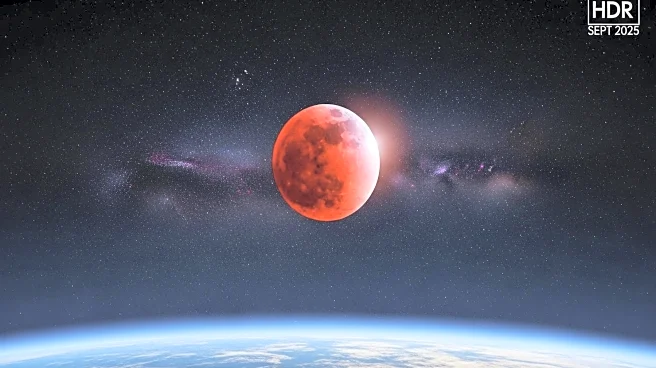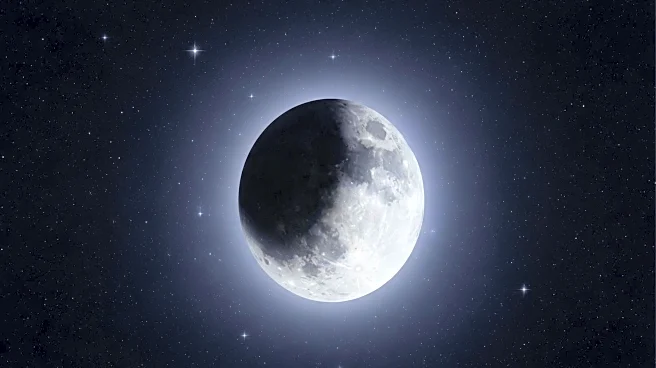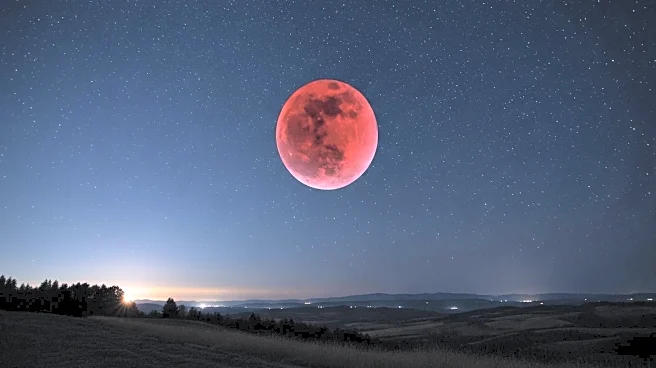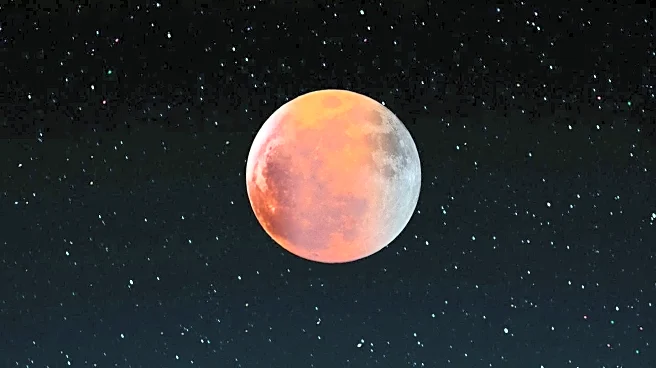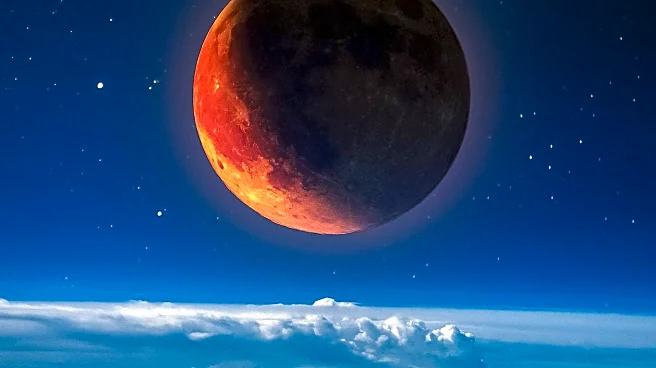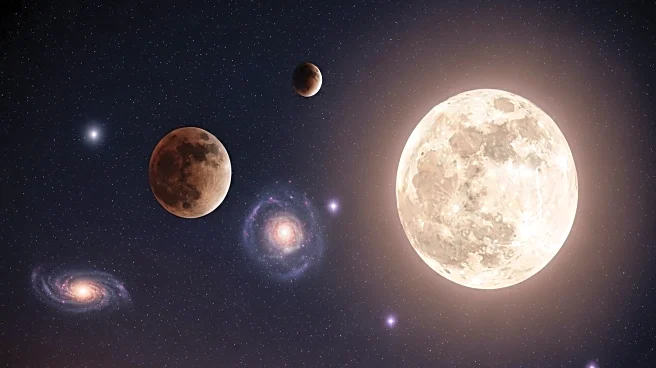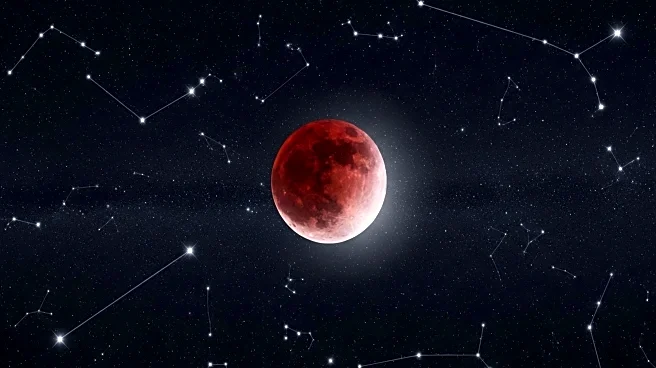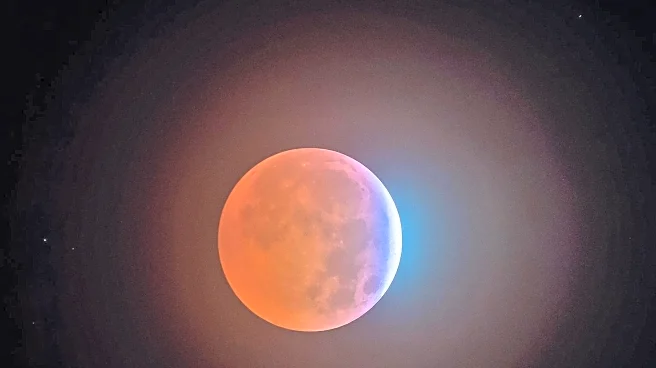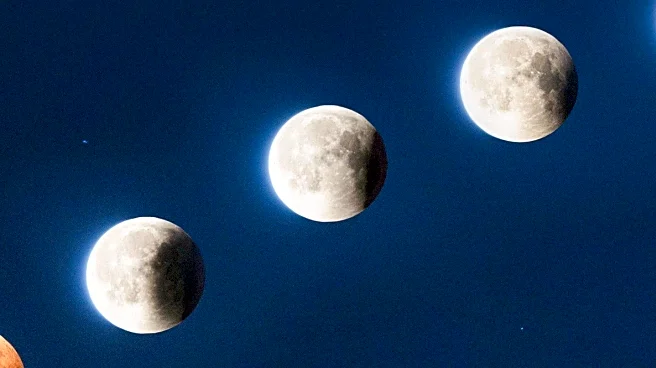What's Happening?
A total lunar eclipse, known as Chandra Grahan 2025, is set to occur on September 7, 2025, transforming the Moon into a 'blood moon.' This celestial event will be visible to billions of people across Asia, Africa, the Americas, Europe, and Oceania. The eclipse is notable for its unusually long 82-minute totality and widespread visibility, making it one of the most significant lunar eclipses of the decade. During a total lunar eclipse, Earth aligns perfectly between the Sun and the Moon, casting its darkest shadow over the lunar surface. Sunlight filtering through Earth's atmosphere gives the Moon its red-orange glow. The eclipse will last several hours, with the blood moon phase peaking during totality.
Why It's Important?
The Chandra Grahan 2025 is significant due to its global visibility and long duration, offering a rare opportunity for people worldwide to witness a total lunar eclipse. Such events are important for astronomers and skywatchers as they provide insights into celestial mechanics and atmospheric effects. The widespread visibility allows for educational opportunities and public engagement in astronomy, fostering interest in science and space exploration. The event also serves as a reminder of the interconnectedness of global communities through shared natural phenomena.
What's Next?
Skywatchers are advised to prepare for the eclipse by finding dark spots away from city lights to enhance their viewing experience. The eclipse can be safely observed with the naked eye, but using binoculars or telescopes can provide more detail. As the eclipse approaches, educational institutions and astronomy clubs may organize viewing events to engage the public and provide information about the science behind lunar eclipses. The next significant lunar eclipse may not occur for several years, making this event a unique opportunity for observation.
